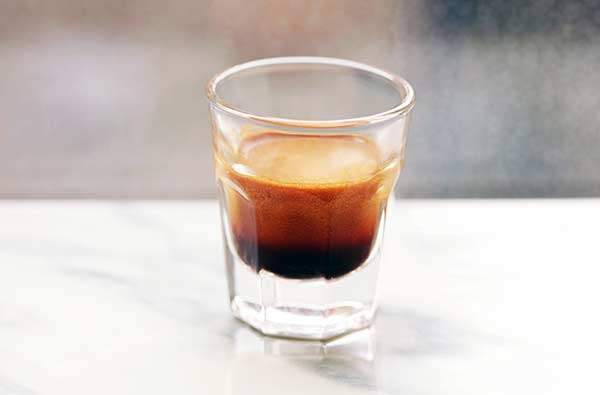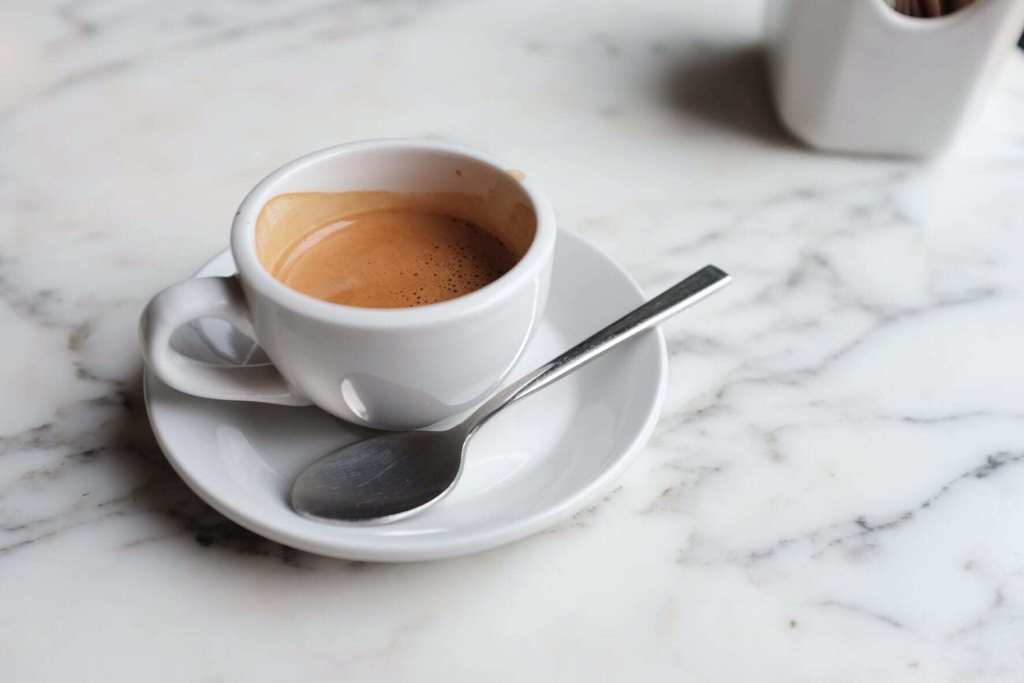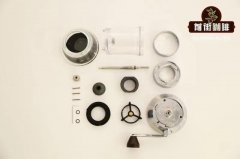The two worlds of Espresso-is it better to roast espresso beans deep or light?
Professional coffee knowledge exchange more coffee bean information please follow the coffee workshop (Wechat official account cafe_style)
If you are lucky enough to have a cup of authentic Italian Espresso in Rome, whether it is La Casa Del Caffe and Sant'Eustachio II Caffe, which opened before and after World War II, or Antico Caffe Greco, which has a history of more than 200 years, or any old cafe on a strange street corner, you will find that the taste and tone of Italian Espresso in Rome are very unified. Medium baked or darker, sweet as the main tone, slightly sour, full-bodied, obvious caramelized aromas, dark chocolate, hazelnut, toffee, occasionally a little dried fruit, raisins interspersed between the end of each mouthful and the next.

Many old Italian shops add a certain proportion of Robusta when mixing Italian coffee beans, and some will add a small amount of sugar or a few drops of special cream before serving Espresso to customers. The coffee habit of many Italian neighbors in cafes is to walk into the bar and order a cup of Espresso for 2 euros, and then chat with the barista or other guests standing nearby while waiting for coffee. Wait for the coffee to arrive, sniff it, or add some sugar, and then turn around and start the day. It is said that many Italians drink several cups of Espresso a day for decades.
If you were a spice trader living in Venice or Genoa during the Age of Discovery and had never had coffee before, how would you perceive and evaluate Espresso when you first came into contact with a drink from a distant Arab world?

Frankly speaking, if there is no concept of modern boutique coffee, temporarily remove the "boutique must be baked shallow!" Deep baking is a bitter taste! "bitterness is a flaw." Robusta is a cheap smell! Good coffee must have a clear sour quality! Good coffee should be clean! Good coffee must have multi-layered aromas of flowers and fruits! ". Wait, wait. Espresso can actually be perceived as some kind of rich, rich hot drink that is definitely richer than cocoa. It is a drink that can be enjoyed, well-balanced and can never get bored in the morning and afternoon every day.
The widespread use of Robusta beans in espresso is often criticized. But let's not forget that this "Arabica + Robusta" blending method existed long before the advent of espresso technology and the exclusive boutique coffee movement in Arabica. Judging from the low proportion of the usage of many famous old stores and multinational brands, it is obvious that it is not to cut corners, or just to increase the seasoning of crema. Many high-quality robusta beans are also used appropriately and exquisitely in Italian coffee beans to increase the diversity of taste and flavor, as well as to reduce the proportion of acidity.
Similarly, from a positive point of view, in the context of less particular attention to the flower and fruit flavor of coffee. Italian espresso tends to be deep-baked in order to reduce acidity, the pursuit of more complete, caramelized later rich aroma. The reason for reducing acidity is not necessarily that they do not understand the contribution of acidity in coffee, but because their main product with high cup yield is Espresso. On the other hand, the low acidity ensures that the other flavors in the coffee are concentrated and strengthened, and the acidity is not easy to become too prominent and irritating, disrupting the balance.

If you think about it, there are many ways to make coffee all over the world. Espresso, which originated in Italy, was a high-priced cool techs at that time in terms of technology and cost. In the early years, the Italians took great pains to design the technology of high-pressure extraction of espresso, but they actually had a very clear design idea and knew what they wanted. The emergence of a technology must also be affected by the nature of the raw materials at that time.
Machines that can make high concentrations of espresso in tens of seconds can only be inspired by living at that time, locals, social rhythms, and coffee taste culture. The pursuit is to quickly wake up with a cup of concentrated, dark chocolate-like Bitter sweet, strong, low-sour, easy-to-taste coffee on the way to work, rather than flower and fruit aroma and regional flavor.
If the habit of drinking coffee in Italy was the same as the shallow baking style of modern northern Europe, it was more acidophilic and attached importance to the delicate flavor of flowers and fruits. Then Italian coffee people may not want to invent espresso at all, which means that today's most versatile, fastest-spreading, most widespread and deepest espresso culture may not emerge at all. After all, under the general gouache ratio, shallow roasted coffee already has a very bright acidity, who would want to condense this acidity by 5 to 6 times under high pressure? How many people growing up in warmer areas would want to get up every morning and swallow a few cups of high-concentration juice or sour plum soup on an empty stomach?

Although there are many coffee practitioners who claim how much they love fine coffee and how much they like light-roasted coffee, in fact, few senior baristas really want to have a cup of light-roasted Espresso every morning, and most of them turn light-roasted Espresso into black coffee in the average proportion of water, or milk into other coffee drinks with a more balanced taste. At this time, the delicate and shallow baked flower and fruit flavor characteristics can be unfolded. This is also naturally reflected in the Nordic region.
The contrast has been tested for nearly a hundred years, and thousands of people naturally enjoy the deep-baked Espresso on the streets of Italy every morning. The reasonableness and continuity of "light roasted" coffee as a pure Espresso drink needs to be tested for longer.
If we search the Internet for public comments on traditional Italian espresso, we will clearly see two worlds. One is ordinary Italians and coffee drinkers, and the other is those who look at them with disdain and know something about fine coffee. The former are mostly happy and satisfied, while the latter think that they add Robusta, deep baking, careless extraction, and even sugar? I don't know anything about coffee!
On the other hand, many old-school Italian bakers are really not used to the bright acidity and taste of shallow baking. There is even a saying in southern Italy that the farther north you go, the worse the coffee will be. In fact, as we all know, the farther north Italy is, the lighter the roasting degree of coffee is-though the shallowest is still medium and deep.

The discussions between the two worlds are often between chickens and ducks, not knowing what the other is dissatisfied with. If you put the light-roasted espresso derived from espresso, coupled with the newly created cup test standards, on the deep-roasted espresso in the old world, you can see that it is full of differences and misunderstandings. It is no longer possible to draw any creative conclusions. Old-school Italian baristas may also find it baffling. They are not in pursuit of bright acidity and 100% Arabica. You insist on taking a bite of their coffee without sour fruit and mixed with Luodou. What is this all about? If it has to be better, shouldn't it be reasonable to compare two deep-baked espresso of the same style?
The concept of boutique coffee, carried out by the third wave of coffee, has indeed injected new vitality into the traditional Italian coffee, developed more possibilities, and is quite different from the tradition in the appeal of flavor. But must the two different worlds of tradition and innovation be opposed to each other? Many people can accept that a food has different taste characteristics in different regions. In many food cultures, as long as they do not violate the principles of health and morality, people will pursue new tastes of innovation, improvement, adaptation and change, as well as the preservation of traditional, ancient, authentic and primitive flavors. The boutique coffee-oriented culture is a little strange at this point, in many things that do not seem to need opposition, but it is easy to form a variety of special antagonism and disdain chain. What on earth is the root of this? This question is very interesting.
END
Important Notice :
前街咖啡 FrontStreet Coffee has moved to new addredd:
FrontStreet Coffee Address: 315,Donghua East Road,GuangZhou
Tel:020 38364473
- Prev

Coffee roasting | A small sharing of the baking curve of a Brazilian red bourbon
When you get a raw bean, how does the baker highlight the personality of a bean? this is a great test of the baker's technical skills. Today, let's talk about how the Brazilian red bourbon determines its curve in the baking process. Whether its flavor will be the same as I want, full-bodied with sweet, rich with nuts, chocolate flavor. Half-sun place
- Next

International Coffee Festival that you don't know | takes you to understand the significance of International Coffee Organization
Professional coffee knowledge exchange more coffee bean information please follow the coffee workshop (Wechat official account cafe_style) you love coffee you have drunk a lot of coffee from the producing areas! Do you like the flower and fruit aroma of Ethiopia, the sour and sweet taste of Kenya, the rich flavor of Mantenin or the sweetness of Panama? If you have drunk all these, then I believe you are indeed a coffee glutton. After all, there are only
Related
- What is the standard process for the purpose of coffee cup testing? What is the difference between hand-brewed coffee and cup testing?
- How to use hand-brewed coffee paragon small golden balls? How does cold coffee lock in the aroma of coffee?
- Is American coffee black? What is the difference between American coffee and drip coffee?
- Unexpected! Well-known tea beverage brand Lele Tea will withdraw from the Zhengzhou market!
- Starbucks enters the fashion and beauty industry?! Netizen: Give me an ice American eye cream
- Why can American refills for free? The difference between Americano and American drip pot coffee
- Being chased out of the rain in front of Starbucks?! Store: Sheltering from rain under umbrellas poses a safety hazard
- The white moonlight has changed?! Lucky launches "Big Winter Pear American"
- Hand-brewed coffee three-stage method, high-sweet and universal brewing method to share! What does the high sweet water level of hand-brewed coffee mean?
- What is the difference between raw, refined and full espresso coffee? How to extract espresso and taste good?

